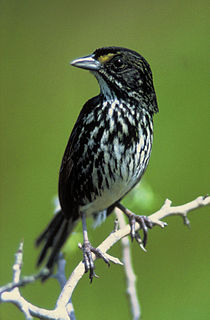 W
WBird conservation is a field in the science of conservation biology related to threatened birds. Humans have had a profound effect on many bird species. Over one hundred species have gone extinct in historical times, although the most dramatic human-caused extinctions occurred in the Pacific Ocean as humans colonised the islands of Melanesia, Polynesia and Micronesia, during which an estimated 750–1800 species of bird became extinct. According to Worldwatch Institute, many bird populations are currently declining worldwide, with 1,200 species facing extinction in the next century. The biggest cited reason surrounds habitat loss. Other threats include overhunting, accidental mortality due to structural collisions, long-line fishing bycatch, pollution, competition and predation by pet cats, oil spills and pesticide use and climate change. Governments, along with numerous conservation charities, work to protect birds in various ways, including legislation, preserving and restoring bird habitat, and establishing captive populations for reintroductions.
 W
WA referendum on spring hunting was held in Malta on 11 April 2015. Voters voted narrowly in favour of retaining the spring hunt, with 50.4% voting for the existing law to remain in place. Voter turnout was 74.8%.
 W
WThe Agreement on the Conservation of African-Eurasian Migratory Waterbirds, or African-Eurasian Waterbird Agreement (AEWA) is an independent international treaty developed under the auspices of the United Nations Environment Programme's Convention on Migratory Species. It was founded to coordinate efforts to conserve bird species migrating between European and African nations, and its current scope stretches from the Arctic to South Africa, encompassing the Canadian archipelago and the Middle East as well as Europe and Africa.
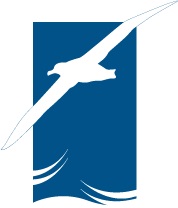 W
WThe Agreement on the Conservation of Albatrosses and Petrels (ACAP) is a legally binding international agreement signed in 2001 and entered into force on 1 February 2004 when South Africa ratified as the fifth Party to the Agreement.
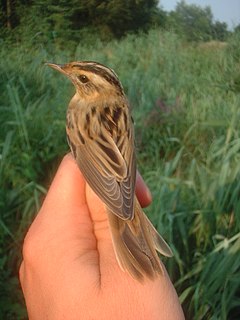 W
WThe Memorandum of Understanding (MoU) concerning Conservation Measures for the Aquatic Warbler is a multilateral environmental memorandum of understanding concluded in 2003 under the auspices of the Convention on Migratory Species of Wild Animals (CMS), also known as the Bonn Convention. This MoU provides the basis for governments, NGO's and scientists to work together to save the aquatic warbler, Europe's rarest songbird. The MoU covers 22 range states. As of August 2012, 16 range states have signed the MoU as well as two cooperating organizations.
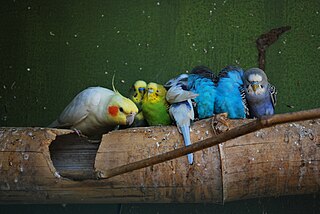 W
WAviculture is the practice of keeping and breeding birds, especially of wild birds in captivity. Aviculture is generally focused on not only the raising and breeding of birds, but also on preserving avian habitat, and public awareness campaigns.
 W
WBelize Bird Rescue (BBR) is an avian rescue and rehabilitation centre in Belize.
 W
WBird ringing or bird banding is the attachment of a small, individually numbered metal or plastic tag to the leg or wing of a wild bird to enable individual identification. This helps in keeping track of the movements of the bird and its life history. It is common to take measurements and examine conditions of feather molt, subcutaneous fat, age indications and sex during capture for ringing. The subsequent recapture or recovery of the bird can provide information on migration, longevity, mortality, population, territoriality, feeding behavior, and other aspects that are studied by ornithologists. Other methods of marking birds may also be used to allow for field based identification that does not require capture.
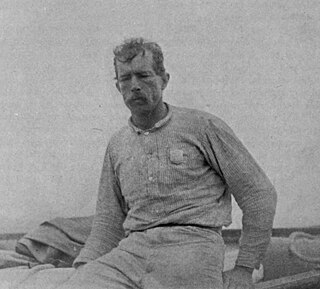 W
WGuy Morrell Bradley was an American game warden and deputy sheriff for Monroe County, Florida. Born in Chicago, Illinois, he relocated to Florida with his family when he was young. As a boy, he often served as guide to visiting fishermen and plume hunters, although he later denounced poaching after legislation was passed to protect the dwindling number of birds. In 1902, Bradley was hired by the American Ornithologists' Union, at the request of the Florida Audubon Society, to become one of the country's first game wardens.
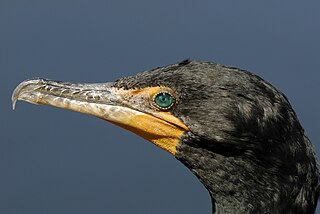 W
WCormorant culling is the intentional killing of cormorants by humans for the purposes of wildlife management. It has been practiced for centuries, with supporters of culling generally arising from the angling community. Culling techniques may involve the killing of birds, the destruction of eggs or both. Historically, culls have occurred to protect the interests of recreational and commercial fishermen who perceive the animals to be competing with them for their intended catch or for the prey of their intended catch. Since the 1960s, the growing aquaculture industry has undertaken cormorant culls to protect its farmed fish and crustacean stocks. Opponents of cormorant culling include conservation groups such as the National Audubon Society, Cormorant Defenders International and Sea Shepherd.
 W
WThe Federal Duck Stamp, formally known as the Migratory Bird Hunting and Conservation Stamp, is an adhesive stamp issued by the United States federal government that must be purchased prior to hunting for migratory waterfowl such as ducks and geese. It is also used to gain entrance to National Wildlife Refuges that normally charge for admission. It is widely seen as a collectable and a means to raise funds for wetland conservation, with 98% of the proceeds of each sale going to the Migratory Bird Conservation Fund.
 W
WJack Rodney Finch was an American conservationist known primarily for his efforts to save the eastern bluebird. He was known as The Birdman of Bailey.
 W
WAt one time, the golden eagle lived in a great majority of temperate Europe, North Asia, North America, North Africa, and Japan. Although widespread and quite secure in some areas, in many parts of the range golden eagles have experienced sharp population declines and have even been extirpated from some areas. The total number of individual golden eagles from around the range is estimated to range somewhere between 170,000 and 250,000 while the estimated total number of breeding pairs ranges from 60,000 to 100,000. Few other eagle species are as numerous, though some species like tawny eagle, wedge-tailed eagle and bald eagle have total estimated populations of a similar size to the golden eagle's despite having distributions which are more restricted. The world's most populous eagle may be the African fish eagle, which has a stable total population estimated at 300,000 individuals and is found solely in Africa. On a global scale, the golden eagle is not considered threatened by the IUCN.
 W
WThe Memorandum of Understanding (MoU) on the Conservation and Management of Middle-European Populations of the Great Bustard is a multilateral environmental memorandum of understanding and was concluded in 2000 under the auspices of the Convention on Migratory Species of Wild Animals (CMS), also known as the Bonn Convention, and came into effect on 1 June 2001. It aims to protect the Middle-European populations of the great bustard and to manage modern agriculture throughout its range in Central Europe in order to save the remaining individuals. The MoU covers 17 range states. As of August 2012, 13 range states have signed the MoU as well as a number of cooperating organizations.
 W
WA bill to amend the Migratory Bird Treaty Act to exempt certain Alaskan Native articles from prohibitions against sale of items containing nonedible migratory bird parts, and for other purposes was a proposed law that would have allowed Alaskan Natives to make and sell traditional handicrafts such as masks, jewelry, clothing, and hunting equipment that are made from parts of migratory birds, particularly feathers.
 W
WThe Memorandum of Understanding (MoU) on the Conservation of High Andean Flamingos and their Habitats is a multilateral environmental memorandum of understanding that was concluded under the auspices of the Convention on Migratory Species of Wild Animals (CMS), also known as the Bonn Convention. The MoU came into effect on 4 December 2008 and provides protection for the populations of high Andean flamingos, which have been subject to drastic reduction and fragmentation of their habitats and have a delicate state of conservation. The MoU covers four range states. As of August 2012, three range states have signed the MoU.
 W
WAn Important Bird and Biodiversity Area (IBA) is an area identified using an internationally agreed set of criteria as being globally important for the conservation of bird populations.
 W
WSeabirds include some of the most threatened taxa anywhere in the world. For example, of extant albatross species, 82% are listed as threatened, endangered, or critically endangered by the International Union for Conservation of Nature. The two leading threats to seabirds are accidental bycatch by commercial fishing operations and introduced mammals on their breeding islands. Mammals are typically brought to remote islands by humans either accidentally as stowaways on ships, or deliberately for hunting, ranching, or biological control of previously introduced species. Introduced mammals have a multitude of negative effects on seabirds including direct and indirect effects. Direct effects include predation and disruption of breeding activities, and indirect effects include habitat transformation due to overgrazing and major shifts in nutrient cycling due to a halting of nutrient subsidies from seabird excrement. There are other invasive species on islands that wreak havoc on native bird populations, but mammals are by far the most commonly introduced species to islands and the most detrimental to breeding seabirds. Despite efforts to remove introduced mammals from these remote islands, invasive mammals are still present on roughly 80% of islands worldwide.
 W
WA light level geolocator, light-level logger or GLS is essentially a lightweight, electronic archival tracking device, usually used in bird migration research to map migration routes, identify important staging areas, and sometimes provide additional ecological information. A geolocator periodically records ambient light level to determine location.
 W
WThe Messenger is a 2015 documentary film written and directed by Su Rynard, focusing on the protection of multiple types of songbirds throughout the world. The film's world premiere took place at the Hot Docs Canadian International Documentary Festival on 2015-04-28.
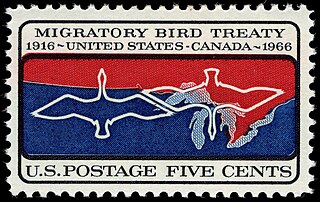 W
WThe Migratory Bird Treaty or Convention is an environmental treaty between Canada and the United States. It was originally signed on 16 August 1916 by the U.S. and Great Britain,, entered into force in on 6 December 1916, and has since been amended several times.Whereas, many species of birds in the course of their annual migrations traverse certain parts of the Dominion of Canada and the United States; and Whereas, many of these species are of great value as a source of food or in destroying insects which are injurious to forests and forage plants on the public domain, as well as to agricultural crops, in both Canada and the United States, but are nevertheless in danger of extermination through lack of adequate protection during the nesting season or while on their way to and from their breeding grounds; His Majesty the King of the United Kingdom of Great Britain and Ireland and of the British dominions beyond the seas, Emperor of India, and the United States of America, being desirous of saving from indiscriminate slaughter and of insuring the preservation of such migratory birds as are either useful to man or are harmless, have resolved to adopt some uniform system of protection which shall effectively accomplish such objects ...
 W
WThe National Aviary, located in Pittsburgh, Pennsylvania, is the only independent indoor nonprofit aviary in the United States. It is also the country's largest aviary, and the only one accorded honorary "National" status by the United States Congress.
 W
WThe National Eagle Repository is operated and managed under the Office of Law Enforcement of the United States Fish and Wildlife Service located at the Rocky Mountain Arsenal National Wildlife Refuge outside of Denver, Colorado. It serves as a central location for the receipt, storage, and distribution of bald and golden eagles that have been found dead. Eagles and eagle parts are available only to Native Americans enrolled in federally recognized tribes for use in religious and cultural ceremonies.
 W
WA nest box, also spelled nestbox, is a man-made enclosure provided for animals to nest in. Nest boxes are most frequently utilized for birds, in which case they are also called birdhouses or a birdbox/bird box, but some mammalian species such as bats may also use them. Placing nestboxes or roosting boxes may also be used to help maintain populations of particular species in an area. The modern nest box was invented by the British conservationist Charles Waterton in the early 19th century to encourage more birdlife and wildfowl on the nature reserve he set up on his estate.
 W
WThe North Slob is an area of mud-flats at the estuary of the River Slaney at Wexford Harbour, Ireland. The North Slob is an area of 10 km2 that was reclaimed in the mid-19th century by the building of a sea wall. It is the lowest geographical point in the Republic of Ireland
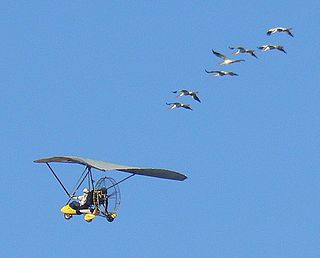 W
WOperation Migration was a non-profit, charitable organization, which developed a method utilizing ultralight aircraft to teach migration to captive-raised, precocial bird species such as Canada geese, trumpeter swans, sandhill cranes and endangered whooping cranes.
 W
WPlume hunting is the hunting of wild birds to harvest their feathers, especially the more decorative plumes which were sold for use as ornamentation, such as aigrettes in millinery. The movement against the plume trade in the United Kingdom was led by Etta Lemon and other women and led to the establishment of the Royal Society for the Protection of Birds. The plume trade was at its height in the late 19th and was brought to an end in the early 20th century.
 W
WRaptor conservation concerns are threats affecting the population viability of birds of prey. Because of their hunting lifestyle, raptors face distinct conservation challenges. As top predators, they are important for healthy ecosystem functioning, and by protecting them many other species are safeguarded. Their extensive habitat requirements make regional conservation strategies necessary for protecting birds of prey.
 W
WThe black robin or Chatham Island robin is an endangered bird from the Chatham Islands off the east coast of New Zealand. It is closely related to the South Island robin. It was first described by Walter Buller in 1872. The binomial commemorates the New Zealand botanist Henry H. Travers (1844–1928). It is also known as kakaruia (Māori) or karure (Moriori). Unlike its mainland counterparts, its flight capacity is somewhat reduced. Evolution in the absence of mammalian predators made it vulnerable to introduced species, such as cats and rats, and it became extinct on the main island of the Chatham group before 1871, being restricted to Little Mangere Island thereafter.
 W
WThe Memorandum of Understanding (MoU) concerning Conservation Measures for the Ruddy-headed Goose is a Bilateral Environmental Memorandum of Understanding between Argentina and Chile and was concluded under the auspices of the Convention on Migratory Species of Wild Animals (CMS), also known as the Bonn Convention. The MoU was concluded as part of the Special Protocol on the Conservation of Wild Fauna and Flora, signed by Argentina and Chile in 2002, and entered into effect on 21 November 2006. It focuses on the protection of the mainland population of the ruddy-headed goose. The MoU is exclusively South American and covers two range States, both of which have signed.
 W
WThe Sea Birds Preservation Act 1869 was an Act of Parliament in the United Kingdom. It was the first Act to protect wild birds in that country.
 W
WThe Memorandum of Understanding (MoU) Concerning Conservation Measures for the Siberian Crane is a Multilateral Environmental Memorandum of Understanding and came into effect on 1 July 1993 and was amended in January 1999. It was the first MoU to be concluded under the auspices of the Convention on Migratory Species of Wild Animals (CMS), also known as the Bonn Convention, and focuses on conserving the Siberian crane as one of the three rarest crane species. The MoU covers twelve range states. As of August 2012, eleven range states have signed the MoU.
 W
WThe Memorandum of Understanding (MoU) on the Conservation of Southern South American Migratory Grassland Bird Species and Their Habitats is a Multilateral Environmental Memorandum of Understanding concluded under the auspices of the Convention on Migratory Species of Wild Animals (CMS), also known as the Bonn Convention and became effective on 26 August 2007. Under the “umbrella” of the CMS, the governments of Argentina, Bolivia, Paraguay and Uruguay agreed to work together towards better conservation of migratory species of grassland birds of Southern South America. The MoU covers five range States, all of which have signed.
 W
WThe State of Australia's Birds (SOAB) is a report series that tracks trends in Australia's bird populations.
 W
WTowerkill is a phenomenon in which birds are killed by collisions with antenna towers. In poor visibility, birds may simply fly into the guy-wires. But night illuminations around the towers can also disrupt migration patterns, with disoriented birds colliding with the structure. Research indicates that blinking lights can reduce deaths without diminishing visibility by aircraft.
 W
WThe Voliere Zürich is an aviary and veterinary hospital situated in the Arboretum in the Swiss city of Zürich. It also houses the so-called Vogelpflegestation, a unique sanatory for birds.
 W
WThe Wildlife and Countryside Act 1981 is an Act of Parliament in the United Kingdom implemented to comply with European Council Directive 2009/147/EC on the conservation of wild birds. In short, the act gives protection to native species, controls the release of non-native species, enhances the protection of Sites of Special Scientific Interest and builds upon the rights of way rules in the National Parks and Access to the Countryside Act 1949. The Act is split into 4 parts covering 74 sections; it also includes 17 schedules.